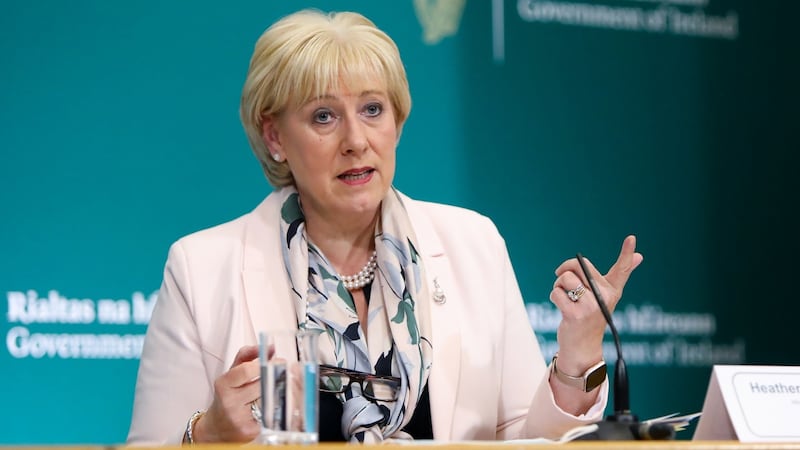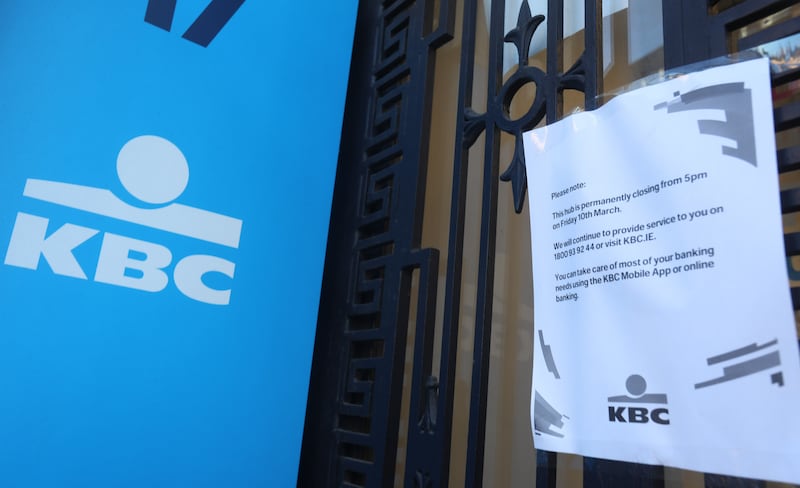With another year almost ending, we take a look back on how people’s finances were impacted over the last 12 months.
Auto-enrolment, where employees are automatically enrolled into a pension scheme and receive contributions from both the Government and their employer to help them save for retirement, took a step closer to getting up and running during the year.
Not before time. The scheme, which is similar to the UK’s Nest or mandatory schemes in Australia and New Zealand, was first mooted some 17 years ago, back in 2006. That’s 17 years in which people could have been saving for a pension, but weren’t.
Of late, however, after years of stagnation, there has been a flurry of activity.
READ MORE
The Department of Social Protection is expected to appoint a third party to build the technology system for the scheme early next year, while enabling draft legislation is also said to be on the way. And investment managers, who will oversee the retirement funds, are expected to be signed up by the second quarter of 2024, according to the Government’s latest timeline.
Moreover, the department has told employers they should be ready for the introduction of auto-enrolment in the second half of 2024.

But will 2024 really be the year that employers and employees alike finally start to make contributions? Time will tell but given the experience to date, plus other challenges including a looming general election, it would be no surprise if the project is pushed out even further.
Property prices ease
After years of sharp post-pandemic growth, putative housebuyers got some signs of hope during the year as house price growth started to ease. Rising interest rates took some of the froth out of the market, as affordability was crunched by more expensive home loans.
The most recent figures show that prices rose by 2.3 per cent in the year to October – this compares to growth of almost 10 per cent in the same period last year. Most notably perhaps, prices actually fell in Dublin, down by 0.6 per cent in the year to October and the sixth month in a row of falling prices – albeit marginal – in the capital.
No surprise perhaps, given prices took off in Dublin earlier than in the rest of the State; the move to hybrid working has also helped sustain price growth in the regions.

Already, the capital‘s negative growth trend is feeding into house prices; the latest figures from the Central Statistics Office (CSO) give a median price of €730,000 for the Blackrock Eircode in south Dublin – marginally below the €732,500 recorded in October last year. Similarly, Dublin 10 had a median price of €279,000 last October but this had fallen to €275,000 by October of this year.
It doesn’t mean that housing will necessarily become affordable in the city; Dermot O’Leary, chief economist with Goodbody Stockbrokers does not expect this trend, of the rest of the State outperforming the capital, to last.
“This trend is starting to fade,” he says. And, while supply is recovering, it won’t necessarily feed into lower prices.
A recent report from AIB pointed to a recovery in supply levels, with the number of new homes built in 2022 up by 21 per cent on the prior year, and this year, “new supply is on track to improve on last year’s performance”.
But O’Leary says that in the short term, house prices are determined more by demand developments rather than supply, and demand remains strong.
So what does this mean for prices?
While there are risks on the horizon – an economic slowdown, a possible though unlikely resurgence in interest rates and rising unemployment, to name three cited by O’Leary – it’s more likely that rates will start to fall, and the economy may slow, but not to a damaging extent.
Further price increases – albeit at a more modest level – are likely.
“I’d say the resilience we’ve seen this year will probably continue next year,” he says, pointing to likely single-digit increases next year.
KBC and Ulster Bank
It was some years in gestation but both Ulster Bank and KBC Bank effectively left the Irish market during the year, even if they have yet to formally hand back their banking licences.
Belgian bank KBC pulled down the shutters on all but one of its branches back in March: the last branch, at Grand Canal Dock in Dublin, closed in August.
According to the Competition and Consumer Protection Commission, there are now just six providers of current accounts that offer branch services in Ireland
On April 21st, Ulster Bank bid its farewell, closing the doors of its remaining 63 branches for the last time and bringing to an end its more than 100-year relationship with the Republic.
Their departure has undoubtedly left a hole in the banking market. While other banks, including AIB, Bank of Ireland and PTSB, stepped in to mop up the banks’ business here, acquiring their loan and deposit books, the loss of the two banks has led to a sharp reduction in the number of players in the market – and thus the strength of the competitive forces which can benefit consumers.
Ulster Bank at one point had 3,000 employees across an 88-branch network and had about 15 per cent of the Irish mortgage market, with more than €20 billion on deposit.

According to the Competition and Consumer Protection Commission, there are now just six providers of current accounts that offer branch services in Ireland, and six with deposit services. Such desultory competition is one of the reasons that rates remain so poor for Irish savers.
Annuities’ comeback
But rising rates are not all doom and gloom. As well as offering a better return for savers, higher interest rates also mean better choices for those looking to draw down private pensions.
Annuities, which offer a guaranteed income in retirement, fell out of favour in recent years due to the poor rates of return on offer. Now, however, they may be a real option for many as an alternative to the approved retirement fund (ARF).
As financial services firm Provest points out, someone retiring back in 2021 would only be offered a rate of 3.619 per cent on their retirement fund: now such a retiree could get a rate of 5.451 per cent.
This means a substantial boost in income.
As Provest’s figures show, a 65-year-old purchasing a single life annuity (with no provision for a survivor’s pension for a spouse) on November 1st, 2021, with a retirement fund of €200,000, could secure income of €7,178 a year. The same annuity, purchased on November 1st of this year, would offer income of €11,070 a year – an increase of some €3,892 a year, or 56 per cent.
“Due to rising interest rates, annuities have once again become increasingly attractive and a viable option for retirees, particularly those who want certainty of income for the rest of their life in addition to not running the risk of the pension falling in value,” says John Kearney, director at Provest.
Trackers bite
Once a prized commodity, tracker mortgages started to lose their lustre in 2022 and this continued into 2023, as interest rates rose sharply.
Rates set by the European Central Bank (ECB), which determine mortgage rates, are going to end the year at 4.5 per cent, the highest level since the introduction of the euro. It means that most tracker mortgages will be paying rates in excess of 5 per cent, based on a margin of ECB rate plus half a percentage point, while some will be paying interest at a rate of 6 per cent or more.
Figures from the CSO show that those on low incomes, and those on tracker mortgages, have been ‘most significantly impacted’ by the rate increases
It’s a sharp contrast from years gone by, when ECB rates were at zero, and has led to a substantial increase in monthly repayments for tracker mortgage holders.
Someone with a mortgage of €250,000 would have had repayments of €804 a month based on a tracker margin of ECB plus one percentage point back in 2021, when ECB rates were zero. As of September of this year, however, those monthly repayments will have shot up to €1,419 a month, or an increase of some €615.
Figures from the CSO show that those on low incomes, and those on tracker mortgages, have been “most significantly impacted” by the rate increases.
But what will 2024 hold for such mortgage holders? While some may decide to give up their tracker altogether, and lock into the certainty of a fixed rate, expectations are that interest rates may have hit a peak in this cycle, with the next movement likely to be downward. This could offer some relief in the coming months.
Savings rates finally rise
In a year when inflation remained high – albeit off the highs of 2022 – at around 5 per cent, savers continued to miss out with the real value of their money taking a hit against an ever rising cost of living.
Savings rates did eventually start to rise during the year – but not enough to adequately reward those with money on deposit.
Central Bank figures show that average rates for new fixed term deposits rose to 2.59 per cent in October but this lagged the euro zone average of 3.27 per cent, meaning Irish depositors are being offer a fifth less in return than their European peers on average.
Unfortunately, Irish savers are still poorly served by the deposit taking institutions here. Although European lending rates, as mentioned, will end the year at 4.5 per cent, the best savings rate on offer here is just 3 per cent AER, with either AIB or PTSB. And to get such a rate requires the effort of setting up a payments account (AIB), or locking in for three years (PTSB).
Irish savers can access better rates via a European platform such as Raisin – Banco Português de Gestão, for example, is currently offering a rate of 4.25 per cent on the platform – but this has additional tax issues.
And the bad news is, that with competition in the deposits space so poor, and the State’s Nation Treasury Management Agency apparently reluctant to beat the market with its rates, the outlook is unlikely to change significantly.
To end with some cheer, however, the good news is that while prices are still rising, the rate of growth has slowed. Inflation is, at last, starting to fall – dropping to 3.9 per cent in the 12 months to November 2023 from a rate of 8.9 per cent at this time last year.
- Sign up for Business push alerts and have the best news, analysis and comment delivered directly to your phone
- Interested in personal finance? Then sign up for our On The Money newsletter which will help you make smart spending and saving decisions in 2024.
- Find The Irish Times on WhatsApp and stay up to date
- Our Inside Business podcast is published weekly – Find the latest episode here




















